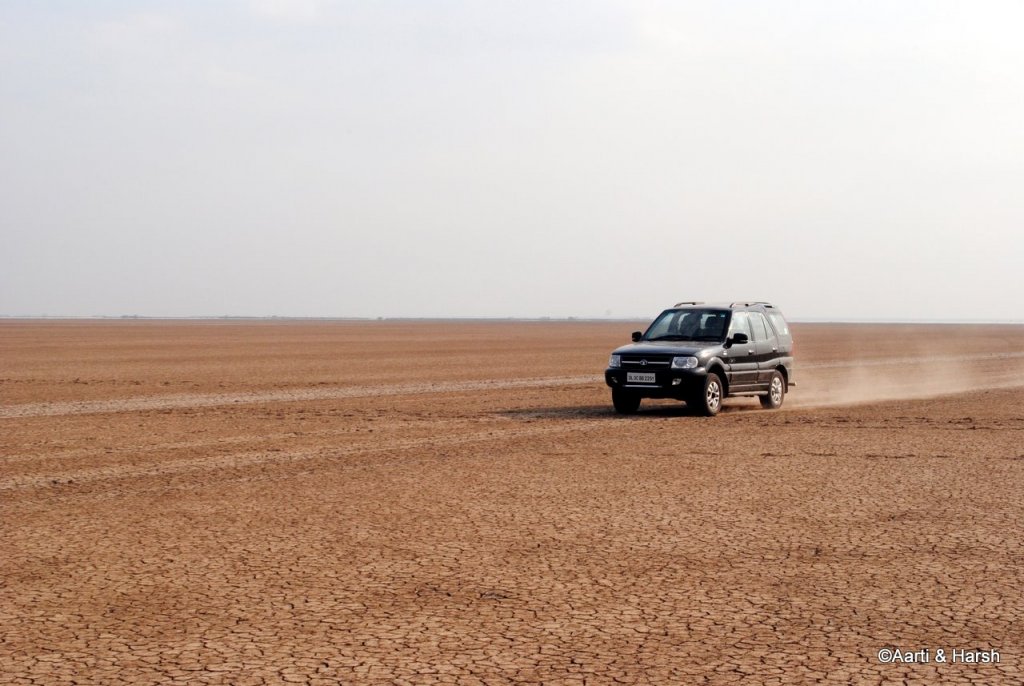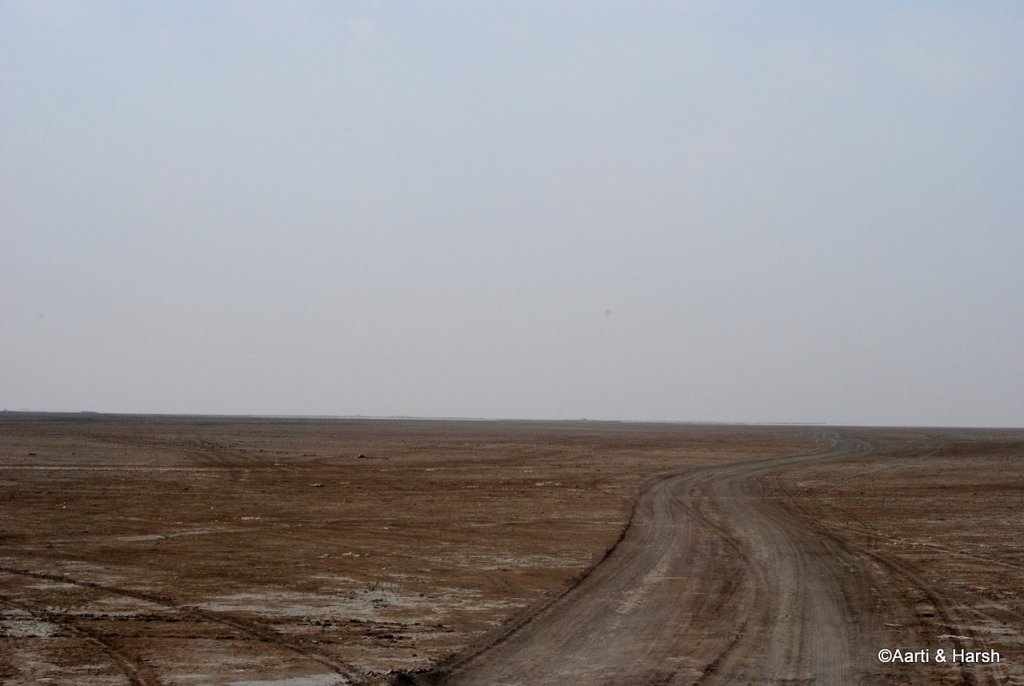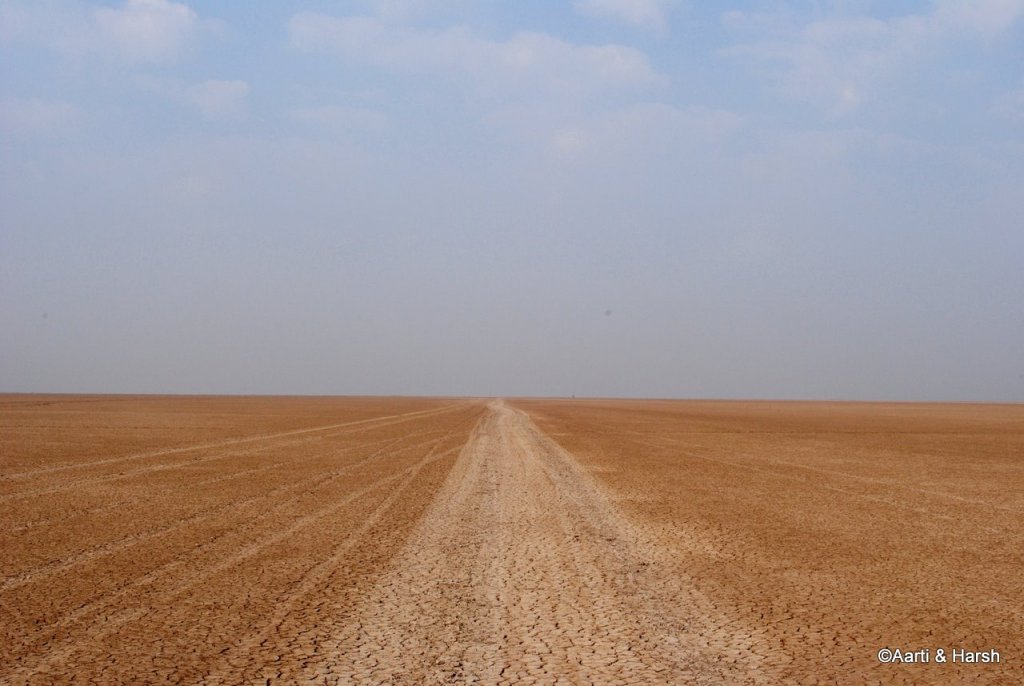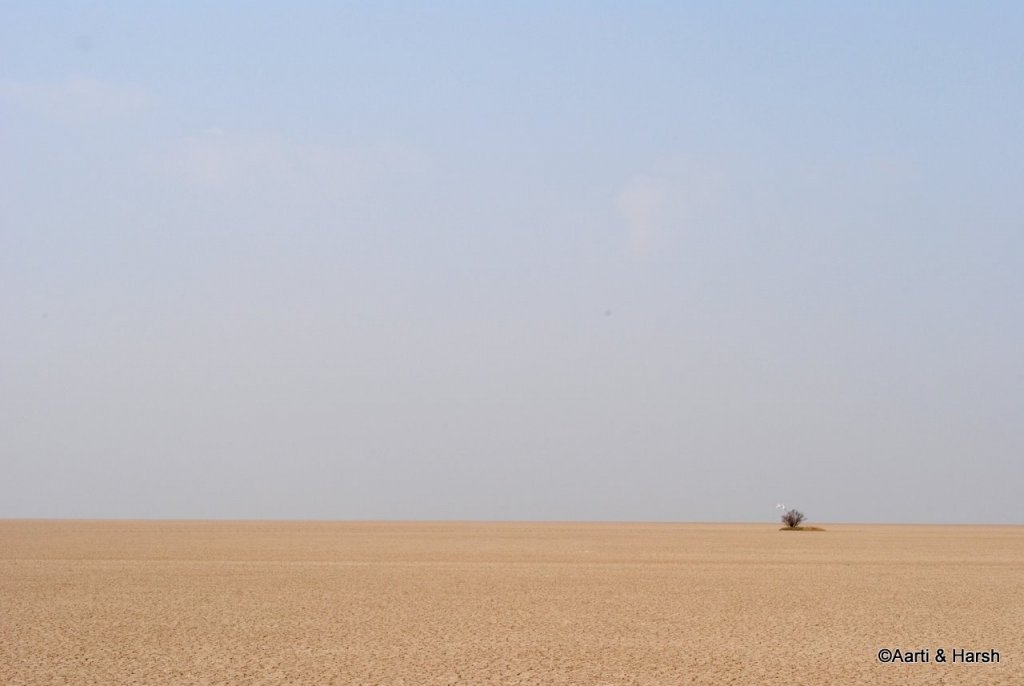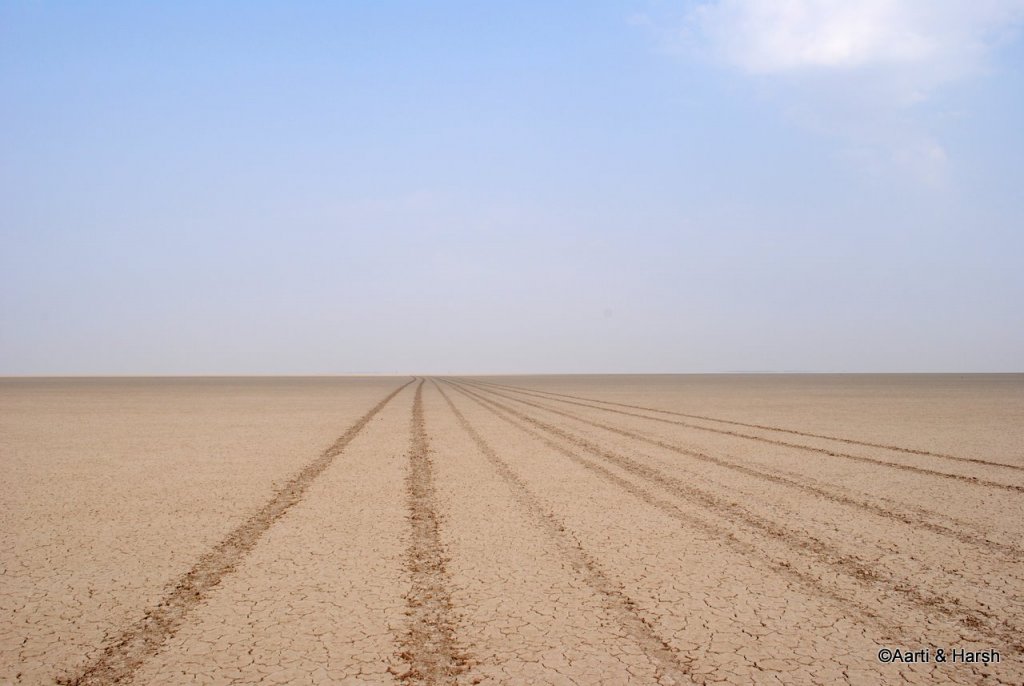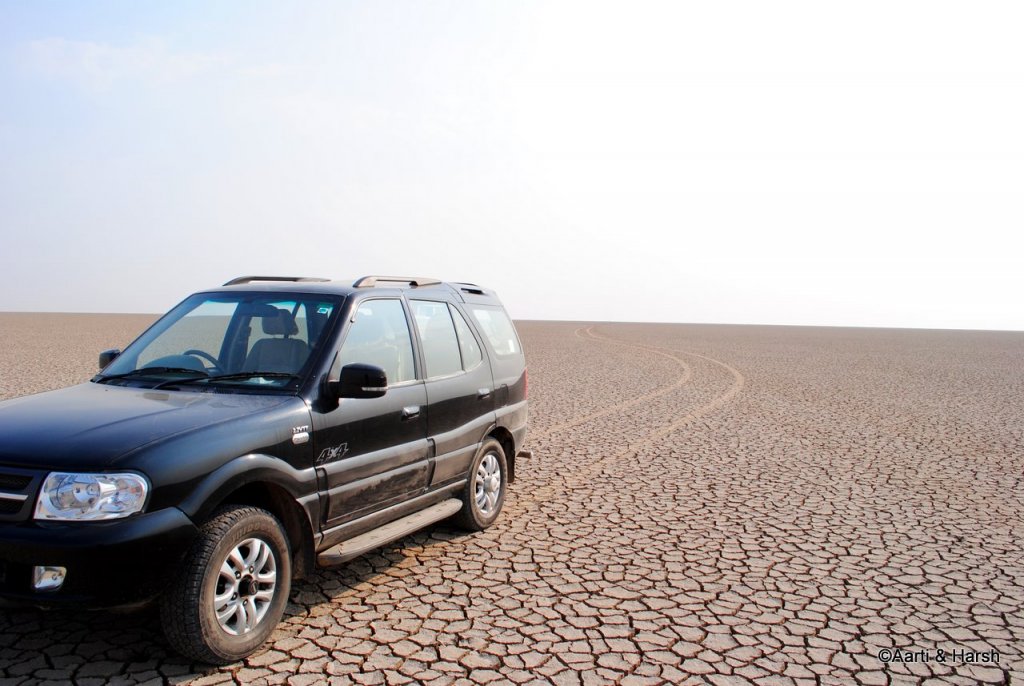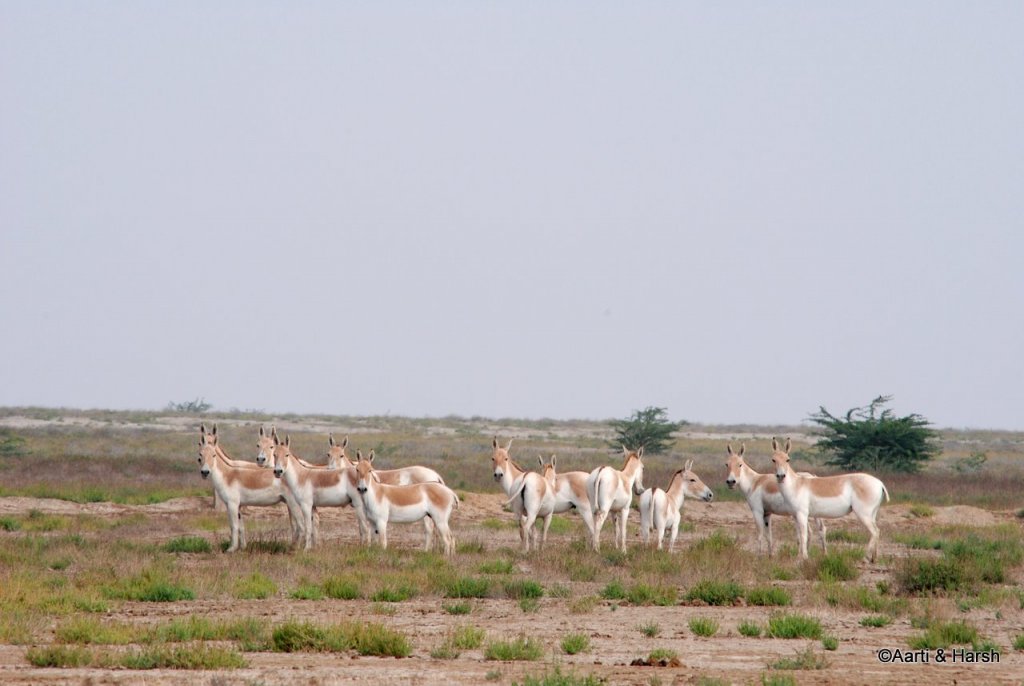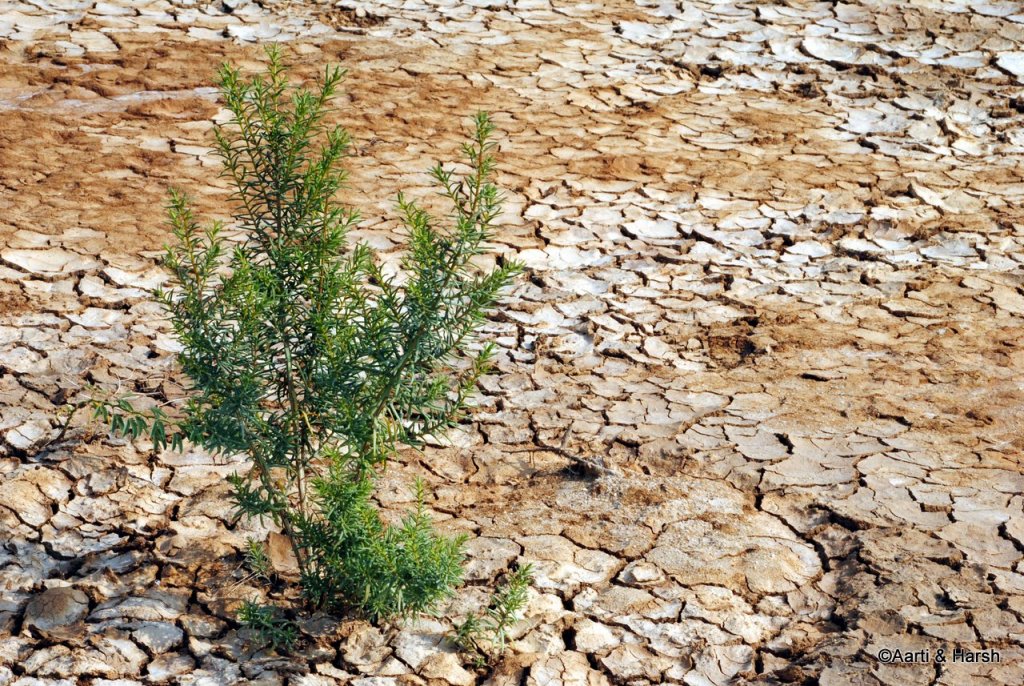This article is in continuation to a previous one and a part of my Rann of Kutch Road Trip travelogue. We traveled from Delhi to Zainabad in the first two days of the trip and then drove across the Rann of Kutch to arrive in Bhuj on the third day. Please click on the link below to read the previous part of the travelogue.
- Journey So Far: Delhi to Zainabad and a Visit to the Little Rann of Kutch
The next day began early before sunrise. The excitement was palpable, and both of us very quickly got ready. If everything went well, we would be through the Little Rann of Kutch to Adesar in no time and would reach Bhuj quite early. However, the possibility of turning back after doing quite some distance in the Rann was also huge.
Quick Navigation
Day 3: Zainabad – Little Rann of Kachchh – Adesar – Bhuj (275km)
We left for Jhijuwada at about 8:30 am after a hearty breakfast at Desert Coursers and armed with a packed lunch of sandwiches for the road. A word of advice for those entering the Rann – plan for the worst, and carry some drinking water with you.
We entered the Rann through the same cut in the road we had discovered the previous evening. The entry points into the Rann are limited because of the thick vegetation of shrubs. We were quite aware of the fact that it would be difficult to exit the Rann too if we were able to cross it somehow in the first place.
Also Read: How I traveled to Leh Ladakh by Public Transport
Little Rann of Kutch
Our hypothesis was that if we reach a salt farm on the other side of the Rann, there should definitely exist a track leading to a village on or near the highway to Bhuj.
Keeping this in mind, I’d marked a village called Varnu Wandh near the highway. It also had several salt farms near it, which we were able to clearly see on Google Earth. To make things further interesting, we had marked an oasis as seen on Google Earth on our GPS device. So the first target for the day was to reach this oasis.
We followed the initial tire marks which apparently were headed straight towards the oasis as our GPS indicated. The shrubs disappeared, and soon all we could see was the parched land of the Rann.
As we went deeper, the Rann started to get marshier and I shifted to 4H just to be safe. I’d heard that sometimes the upper crust just gives way all of a sudden. So the chances of getting stuck in the mud are quite high. At least with 4H on, there was a (false) sense of security that in case it happens, we stand a chance to get out of the rut.
The first free stretch into the Rann after crossing shrubs. Soon the shrubs go away too
The signature parched land of the Rann, a “highway” towards “Oasis”
The road is not as dry as it seems, the parched soil was quite moist underneath and gave away at times.
Navigating the Way
The tire marks now seemed to go in a different direction. So we had to leave them and move in the general direction of the oasis. After driving for another 10 minutes or so, we found another set of tire marks that were moving towards the oasis. In the Rann, it makes sense to stick to existing tire marks; lest one intends to get stuck anywhere.
These tracks led to a salt farm, and as the farm came nearer, the tracks became marshier. We decided not to head straight towards the salt farm, but skirt it to avoid the marshier patch around it.
Also Read: Nepal Bike Trip – Itinerary, Travelogue, Cost, Hotels
I parked the car near the house at the corner of the farm and walked towards it. The man working there came towards me and gave me the bad news that it would not be possible to cross the Rann. He was speaking in Gujarati, so we were both unable to comprehend each other completely.
But as much as I could understand from him, there was some river ahead that was impossible to cross. It had been 1 hour 15 minutes since we’d taken the cut from Jhijuwada, and after coming so deep into the Rann, we were in no mood to go back.
Disheartened, I gave the news to Aarti. Driving across the Rann was the greatest attraction of our Rann of Kutch road trip. So we both decided to at least see this river and maybe catch some interesting shots near the water body. Somehow the concept of a river through the Rann did not make sense, and we were hoping against hope that it was not true. We moved ahead.
A settlement of salt worker family
In the Middle of Nowhere
The tire tracks soon disappeared, and we were left on our own, heading towards the village Varnu Wandh based on the directions the GPS gave us. We’d chucked the idea of locating the oasis since it would definitely be marshy there.
The drive during the next 45 minutes can at best be described as exhilarating. Cruising at 60 kmph through the Rann with nothing as far as the eye could see was a fantastic experience, difficult to describe in words. Some sets of tire tracks came up, but disappeared soon, and seemed to head in a different direction.
With nothing to see at the horizon, there is little reference frame to give a direction sense to the driver. All this while, we were waiting to hit the edge of a river or a huge water body, but nothing came up. We were filled with mixed emotions.
Also Read: Delhi to Bhutan Bike Trip – Ride of a Lifetime
The deeper we went, the greater chance we had of crossing the Rann. However, there was also the greater the risk of turning back at the last moment. We also found a set of stone pillars erected one after the other at equal distance forming markers of a path through the Rann, although there were no tire tracks next to them. This gave us further confidence to move ahead, and we did.
The shrub in the distance provides for a much-needed frame of reference In an otherwise empty landscape.
Sometimes one just comes across such “expressways”. The soil was still marshy and we were leaving our footprints as well.
These markers were quite encouraging at times.
As you can see the soil sinks once the vehicle crosses, the tire tracks behind are ours.
Chasing the Khurs
After 2 hours of entering the Rann, we finally saw a salt farm in the distance. Is this it, we asked ourselves. Varnu Wandh also seemed to be at a distance of 10 km or so from that position. As we approached the salt farm, we saw another set of tire tracks leading to it.
This was highly encouraging. But before we could celebrate our success of crossing the Rann, we saw a huge group of Khurs staring at us. It was wild ass safari time. Without giving another thought to our exit from the Rann, we left the tire tracks and drove towards the group of Khurs.
Also Read: Road Trip from Delhi to Kinnaur and Mussoorie
The ground was much marshier here and scarier. But the adrenaline rush of capturing them on camera gave us the required high of taking the risk. We succeeded in getting quite close to them, all the while exclaiming at how similar they looked to Kiangs. After shooting them to our satisfaction, we returned to our destination, Varnu Wandh.
A gorgeous bunch of khurs. Love the way they stare
The adrenaline rush, and the excitement of sighting so many Khurs, made us lose our minds. Instead of looking for the tire tracks we were following, we headed straight towards the buildings we could see in the distance. Soon we crossed a lake to our right, carefully navigated away from it and towards what seemed like a village.
Also Read: Road Trip to Morni Hills and Tikkar Taal
Tires Deep in the Marsh
We did not study the ground properly, and even if we had there was no way to tell that it was SUPER marshy. Splut, split, splat! We were royally stuck with all tires sunk in the marshy field. We were already in 4H mode, but the car was not budging. After the foggy lens on Day 2, this was the second scare on our Rann of Kutch road trip.
I did not try any further and stopped the car and got out to study the extent of the damage. Mud was clinging to all four tires. But there was still a possibility of getting traction from the edges of the tires. The car had sunk quite a bit. Climbing back again seemed like getting into a Honda City rather than a Tata Safari.
I decided to give it one more shot in the 4L mode; before I took the spade out to clear the mud off the wheels to get more traction. I put on the reverse gear. The car budged just a little. I then immediately shifted to forward gear. It rocked forward, and a final quick shift to the reverse gear made the car rock backward and out of the rut! Thank God!
We were out of it and on solid ground now. I then spent the next 20 minutes scraping the mud off all the tires with the spade we keep handy, as Aarti took photographs.
The tire when it was pulled out of the mud. Laboring in the scorching sun to get the mud off the tires.
The unsuspecting ground near to the place where we stuck, as marshy as that place.
Across the Rann of Kutch
Once the mud was scraped off enough to give the tires traction, we moved on and retraced our steps to find the tire tracks, which we eventually did after 15 minutes of looking around. They led us to a salt farm, and we knew we’d made it!
Also Read: Delhi to Sach Pass Bike Ride – Dalhousie and Sach Pass
Soon we left the Rann behind, and found a tarred road, with a signboard that said that Adesar, the village on the highway, was 10 km away. We couldn’t stop smiling as the thrill of having crossed the Rann had completely overwhelmed us! What an adventure it was!
Still shaky on what could’ve been, we neglected to shoot the pelicans in the lake
Bhuj
We headed for Bhuj and reached by about 2:30 pm or so. We checked into Hotel KBN that we’d booked from Delhi. After an initial scare from the outer looks of the hotel, we were glad to see that the inside was nice and clean. The room especially was clean, bright, and comfortable.
After a quick lunch and a nice refreshing shower, we hit the roads of Bhuj to look for the BSF headquarters to arrange for our permit. We had the most difficult time locating it, as everyone kept pointing us in the direction of the BSF base rather than the headquarters.
For the record, the BSF headquarter is located on Kodaki road near the Hamisar lake in the north-western part of the city, while the BSF base is in the southern part of the city.
Also Read: Road Trip to Madikeri – Boat Rafting in Madikeri
Arranging the Permits
We finally managed to reach the sector headquarters by about 5:15 pm. It was a little too late to get the permit the same day but applied for it nevertheless so that we could pick it up the next day. The permit was to visit the border post in the Greater Rann called Vigakot.
Normally, Indian tourists are not required to take permits to visit the general destinations of the region and are allowed up to ‘India Bridge’ and ‘Kala Dungar’ without them. However, to go past ‘India Bridge’, one needs a permit from the BSF guys.
As is the normal procedure, it requires an application, all details of individuals (including the driver) and the car being used to go to the border post, a copy of IDs of all the individuals, and the RC of the car. We were told to pick it up at the same time next evening.
- Journey Ahead: Bhuj to Lakhpat Fort to Koteshwar to Bhuj
This concluded the third day of our Rann of Kutch road trip. It had somehow been a tiring day, and we returned back to our hotel early. The plan for the next day was to get up early and head towards Lakhpat and Koteshwar so that we could be back in Bhuj by 4 pm to pick up our permit.
Rann of Kutch Road Trip – Conclusion
I hope the travelogue, pictures, and information on Rann of Kutch Road Trip were of help. Please click on the link above to continue reading the next part of this travelogue. If you have any questions or need any other details, please feel free to ask in the comments section below or at our Community Forum, and I will be glad to answer.

